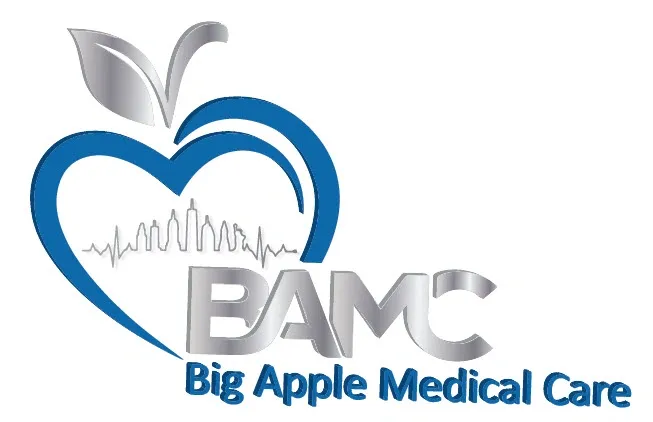What to Expect From Back Pain Treatment? Essential Steps and Recovery Timeline

Back pain affects millions of people worldwide, often disrupting daily activities and diminishing quality of life. Understanding what to expect from treatment options can help sufferers make informed decisions about their care journey. Effective back pain treatment typically begins with a thorough assessment to identify the underlying cause, followed by a personalized plan that may include physical therapy, medication, lifestyle modifications, or in some cases, minimally invasive procedures.
At specialized facilities like Big Apple Medical Care, patients receive comprehensive care tailored to their specific condition. Their multidisciplinary approach combines advanced diagnostic techniques with evidence-based treatments to address both symptoms and root causes of back pain. Many patients experience significant improvement within weeks when following a structured treatment protocol under professional guidance.
Understanding Back Pain and Its Causes
Back pain affects millions of people worldwide and can significantly impact quality of life. The spine and surrounding muscles form a complex structure that can develop problems from various causes, ranging from simple muscle strains to serious underlying conditions.
Common Causes of Back Pain
Back pain often stems from mechanical issues involving the spine, muscles, and nerves. Muscle strains result from improper lifting techniques or sudden awkward movements that overstretch back muscles. Herniated or bulging discs occur when the soft cushions between vertebrae rupture or shift, potentially pressing on nearby nerves.
Arthritis of the spine gradually degenerates spinal joints, causing inflammation and pain. Osteoporosis weakens bones, making them susceptible to compression fractures that can be extremely painful.
Poor posture, especially during prolonged sitting, places excess strain on the back muscles and spine. Obesity adds stress to the back by shifting the body’s center of gravity and forcing spine compensation.
Other causes include:
- Structural problems like scoliosis
- Infections affecting the spine
- Traumatic injuries from accidents or falls
- Age-related degeneration of spinal components
Identifying Symptoms and Severity
Lower back pain presents with varying symptoms depending on the underlying cause. Acute pain typically appears suddenly and lasts for days to weeks, while chronic low back pain persists for more than three months.
Warning signs that require immediate medical attention:
- Pain accompanied by fever
- Pain following a fall or injury
- Pain with numbness or weakness in the legs
- Loss of bladder or bowel control
- Pain that worsens when lying down
The quality of pain provides important diagnostic clues. Sharp, shooting pain may indicate nerve involvement, while dull, aching pain often relates to muscle issues. Pain and stiffness that worsens in the morning might suggest inflammatory conditions.
Movement patterns also matter—pain that decreases with specific positions or increases with certain activities helps identify the source.
Diagnosing the Source of Your Back Pain
Proper diagnosis begins with a thorough medical history and physical examination. A healthcare provider will evaluate your pain patterns, physical limitations, and neurological function to narrow down potential causes.
Imaging tests play a crucial role in diagnosis:
- X-rays reveal bone problems and alignment issues
- MRIs provide detailed images of soft tissues including discs and nerves
- CT scans offer cross-sectional views helpful for complex cases
Blood tests may be ordered to check for inflammatory markers or infections. In some cases, electromyography (EMG) tests nerve function to identify compression or damage.
Pain specialists often use diagnostic injections to pinpoint the exact pain source. These targeted injections deliver medication to specific structures while providing valuable diagnostic information based on the patient’s response.
Evaluating Your Back Pain: What to Expect
Understanding how healthcare providers assess back pain is crucial for patients seeking effective treatment. The evaluation process typically involves detailed questioning about your symptoms and thorough physical examinations that may be supplemented with imaging studies.
Initial Assessment and Medical History
When you visit a doctor for back pain, they will first ask you to rate your pain on a scale of 1-10. This helps quantify the severity of your discomfort and track improvements over time.
Your provider will inquire about when the pain started, what activities make it worse or better, and whether you’ve had previous episodes of back pain. This history helps identify patterns and potential causes.
Be prepared to discuss:
- The location and quality of your pain (sharp, dull, burning)
- How your pain affects daily activities
- Any treatments you’ve already tried for back pain relief
- Family history of similar conditions
At specialized clinics like Big Apple Medical Care, practitioners create detailed pain profiles to develop personalized treatment approaches.
Physical Examinations and Imaging
The physical examination typically begins with observing your posture and movements. Your doctor will note how you walk, sit, and stand.
Range of motion tests help determine how your pain limits movement. The provider may ask you to bend forward, backward, and side-to-side while monitoring when pain gets worse.
Neurological tests check for:
- Muscle strength
- Reflexes
- Sensation in your legs
- Signs of nerve compression
If your symptoms warrant further investigation, your doctor might order imaging tests such as:
- X-rays – show bone alignment and detect fractures
- MRI – visualizes soft tissues including discs and nerves
- CT scans – provides detailed images of bones and joints
Pain specialists often use these diagnostic tools together to create a comprehensive understanding of your condition and develop an effective treatment plan.
Back Pain Treatment Options
Treatment for back pain encompasses various approaches tailored to the specific cause, severity, and duration of pain. The right treatment plan often combines multiple strategies to effectively manage pain and address underlying issues.
Conservative and Non-Surgical Treatments
Physical therapy stands at the forefront of conservative back pain treatment. Trained therapists design exercise programs that strengthen core muscles, improve flexibility, and correct posture problems that contribute to pain. These exercises typically focus on the lower back, abdomen, and hip muscles.
Heat and cold therapy offer simple yet effective relief for many patients. Heat increases blood flow and relaxes muscles, while cold reduces inflammation and numbs acute pain. Alternating between these treatments often provides optimal results.
Manual therapies like massage, spinal manipulation, and mobilization can help relieve back pain by improving circulation and reducing muscle tension. These hands-on approaches may also help realign the spine and improve function.
Lifestyle modifications represent crucial components of long-term pain management. These include:
- Maintaining proper posture
- Using ergonomic furniture
- Weight management
- Stress reduction techniques
- Regular physical activity
Medications and Pain Relievers
Over-the-counter medications often serve as first-line treatments for back pain. These include:
- NSAIDs (ibuprofen, naproxen): Reduce inflammation and pain
- Acetaminophen: Alleviates pain without addressing inflammation
- Topical analgesics: Provide localized relief through creams, gels, or patches
Prescription medications become necessary for more severe pain. Muscle relaxants help reduce muscle spasms, while certain antidepressants and anticonvulsants effectively manage nerve pain that doesn’t respond to other treatments.
Opioid medications may be prescribed for short-term use in cases of acute, severe pain. However, due to significant risks of dependence and side effects, they require careful monitoring and typically aren’t recommended for chronic back pain management.
Doctors at specialized facilities like Big Apple Medical Care often create customized medication plans that balance pain relief with minimizing potential side effects, especially when treating chronic back pain.
Nonsurgical Interventional Treatments
Epidural steroid injections deliver powerful anti-inflammatory medication directly to the irritated nerve roots, providing relief that can last from weeks to months. These injections work best for radiating pain caused by nerve compression.
Facet joint injections target the small joints connecting vertebrae, reducing inflammation in these commonly affected areas. They serve both diagnostic and therapeutic purposes, helping physicians identify pain sources while providing relief.
Radiofrequency ablation uses heat to disable specific nerves that transmit pain signals from the spine. This procedure can provide longer-lasting relief, sometimes up to a year, for patients with certain types of spinal pain.
Spinal cord stimulation employs small electrical impulses to interrupt pain signals before they reach the brain. This technique proves particularly effective for persistent nerve pain that hasn’t responded to other treatments.
Surgical Treatment Approaches
Spinal decompression surgeries aim to relieve pressure on compressed nerves. Common procedures include:
- Laminectomy: Removes part of the vertebral bone to create space
- Discectomy: Removes herniated disc material pressing on nerves
- Foraminotomy: Enlarges the opening where nerve roots exit the spine
Spinal fusion stabilizes the spine by permanently connecting two or more vertebrae. This procedure prevents motion between vertebrae that causes pain and is typically reserved for conditions involving spinal instability or severe degenerative changes.
Minimally invasive surgical techniques offer advantages including smaller incisions, less muscle damage, reduced blood loss, and faster recovery times. These approaches use specialized instruments and imaging guidance to access the spine with minimal disruption to surrounding tissues.
Artificial disc replacement presents an alternative to fusion for some patients, preserving motion at the affected spinal segment while removing the damaged disc. This option may reduce the risk of adjacent segment degeneration seen after fusion surgeries.
Recovery, Prevention, and Long-Term Outlook
Recovering from back pain involves both proper treatment and ongoing prevention strategies. Patients who actively participate in their recovery process typically experience better outcomes and reduced risk of recurrence.
How to Prevent Back Pain Recurrences
Preventing back pain recurrence requires consistent attention to body mechanics and activity levels. Regular exercise focused on core strengthening helps stabilize the spine and prevent future injuries. Exercises like swimming, walking, and yoga can improve flexibility while building supportive muscles.
Proper lifting techniques are essential to prevent back pain. Individuals should bend at the knees, keep objects close to the body, and avoid twisting while lifting. Maintaining a healthy weight reduces stress on the spine and supporting structures.
Ergonomic adjustments at work and home can significantly reduce back pain risk. Using chairs with proper lumbar support, positioning computer screens at eye level, and taking regular breaks from sitting can help relieve pressure on the spine.
Lifestyle and Self-Care Strategies
Diet plays an important role in back health. Anti-inflammatory foods like fatty fish, colorful fruits, and vegetables may help reduce pain and inflammation. Staying hydrated supports intervertebral disc health and overall spinal function.
Sleep position can dramatically impact back comfort. Many find that sleeping on their back with a pillow under the knees or on their side with a pillow between the knees can help relieve nighttime discomfort.
Stress management techniques including meditation, deep breathing, and progressive muscle relaxation may improve pain perception. High stress levels often correlate with increased muscle tension and pain sensitivity.
Regular application of heat or cold therapy can help with pain management during flare-ups. Heat improves blood flow and relaxes muscles, while cold reduces inflammation when pain is acute.
Living With Chronic Back Pain
For those with persistent back pain, developing a comprehensive pain management strategy is crucial. This may include scheduled physical activity, medication management, and regular consultations with healthcare providers at specialized centers like Big Apple Medical Care.
Pain tracking tools can help identify triggers and patterns. Many patients benefit from keeping a simple journal noting:
- Pain levels (scale 1-10)
- Activities performed
- Medications taken
- Sleep quality
Support groups provide both emotional support and practical advice for those living with chronic back pain. Connecting with others who understand the challenges can reduce feelings of isolation.
Pacing activities helps prevent pain exacerbation. Breaking tasks into smaller segments with rest periods in between allows individuals to remain active without triggering severe pain episodes.
Frequently Asked Questions
Back pain treatment involves various approaches depending on the cause, severity, and individual patient factors. Questions about treatment options, causes, and when to seek medical help are common among those suffering from back pain.
What non-surgical therapies are effective for managing chronic lower back pain?
Physical therapy stands out as a highly effective non-surgical treatment for chronic lower back pain. Therapists design customized exercise programs that strengthen core muscles and improve flexibility.
Chiropractic adjustments can realign the spine and reduce pressure on nerves. Many patients experience significant relief after several sessions with a qualified chiropractor.
Acupuncture has shown promising results for some patients with chronic back pain. This ancient technique may help by releasing endorphins and improving blood circulation to affected areas.
Massage therapy often provides temporary relief by reducing muscle tension and improving blood flow. Regular sessions may help manage pain over time when combined with other treatments.
What are the primary causes of back pain in women?
Hormonal fluctuations during menstruation, pregnancy, and menopause can contribute significantly to back pain in women. These changes affect ligament laxity and posture.
Osteoporosis affects women at higher rates than men, especially after menopause. The resulting vertebral compression fractures can cause severe back pain.
Pregnancy commonly causes back pain due to weight distribution changes and the release of relaxin, a hormone that loosens ligaments in preparation for childbirth.
Fibromyalgia, which affects more women than men, often manifests with chronic back pain along with widespread muscle and joint discomfort.
How can severe back pain be alleviated quickly using at-home remedies?
Cold therapy using ice packs for 15-20 minutes several times daily can reduce inflammation and numb sore tissues. This works best during the first 48 hours after pain begins.
Heat therapy with warm compresses or heating pads relaxes tight muscles and increases blood flow. Apply heat for 15-20 minutes at a time after the initial inflammation subsides.
Over-the-counter pain relievers like ibuprofen or naproxen can reduce both pain and inflammation. Always follow package directions and consult a healthcare provider if you have underlying conditions.
Gentle stretching, particularly cat-cow poses or knee-to-chest stretches, may provide relief by decompressing the spine and relaxing tense muscles.
What are common medications prescribed by healthcare professionals for back pain relief?
Muscle relaxants like cyclobenzaprine help reduce muscle spasms associated with back pain. These medications work best for short-term use due to potential side effects like drowsiness.
Prescription-strength NSAIDs provide more potent anti-inflammatory effects than over-the-counter options. These medications help reduce swelling around irritated nerves and tissues.
Opioid medications may be prescribed for severe, acute back pain when other options have failed. Due to addiction risks, these are typically prescribed for very short periods.
Certain antidepressants, particularly tricyclic antidepressants, can help with chronic back pain by altering pain perception in the brain, even in patients without depression.
When experiencing immobilizing back pain, what immediate actions should be taken?
Rest in a comfortable position, preferably lying on your back with pillows under your knees or on your side with pillows between your knees. Limit bed rest to 1-2 days to prevent muscle weakening.
Apply ice for the first 48-72 hours to reduce inflammation, followed by heat to relax muscles. Alternate between the two if that provides better relief.
Take appropriate over-the-counter pain medication according to package directions. If pain remains severe despite these measures, contact a healthcare provider promptly.
At facilities like Big Apple Medical Care, specialists can provide immediate assessment and treatment plans for severe back pain that doesn’t respond to home remedies.
What are the signs that back pain requires medical intervention?
Pain radiating down one or both legs, especially with numbness or tingling, may indicate nerve compression requiring prompt medical attention. This could signal a herniated disc or sciatica.
Loss of bladder or bowel control accompanied by back pain constitutes a medical emergency. This may indicate cauda equina syndrome, which requires immediate surgical intervention.
Pain following a fall or injury, particularly in older adults or those with osteoporosis, needs evaluation. Fractures may not always be immediately apparent but require proper treatment.
Persistent pain lasting more than two weeks despite rest and home remedies should be evaluated by a healthcare professional. Chronic conditions often respond better to early intervention.






